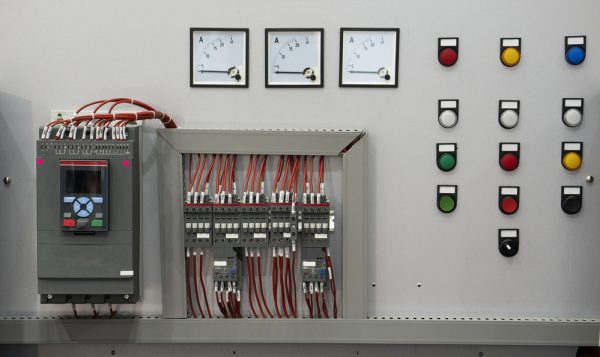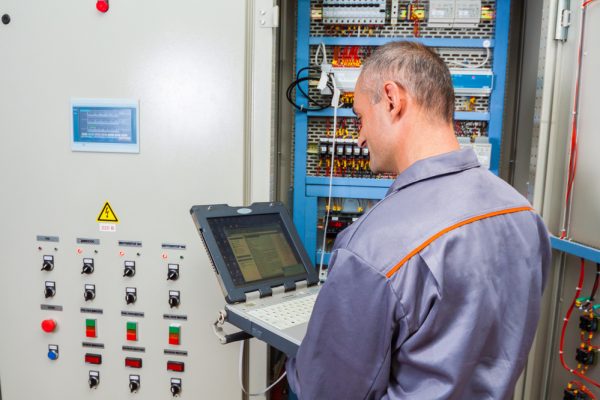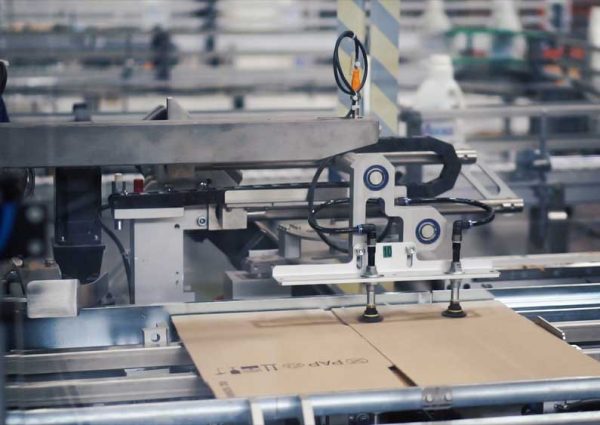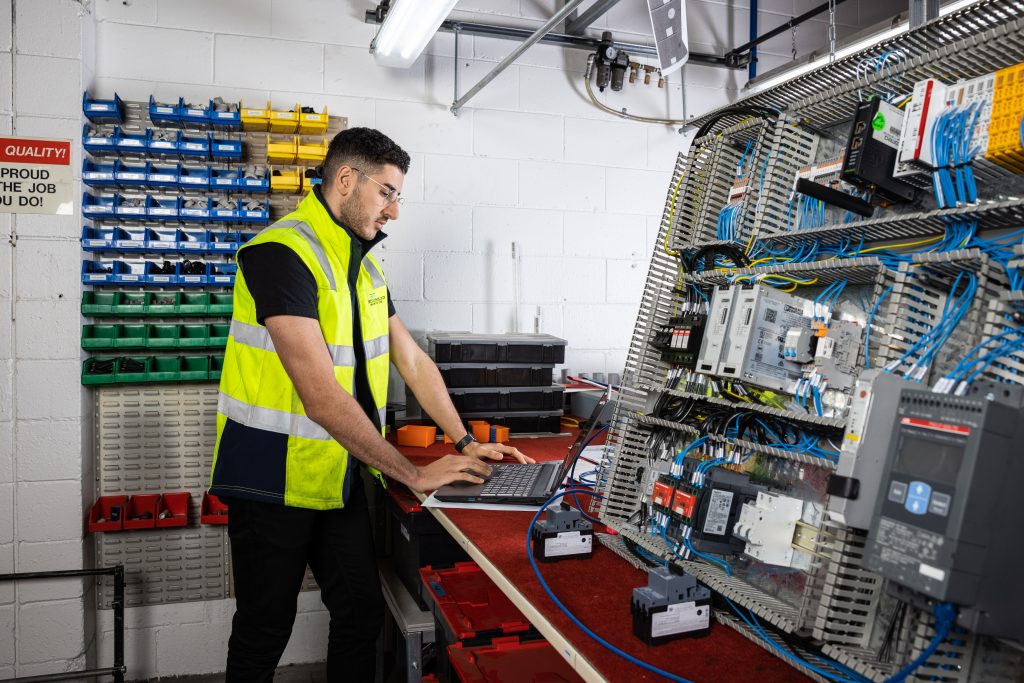Programmable Logic Controllers (PLCs) are the major components in industrial automation and control systems. PLC programming is an essential task that skilled industrial electricians perform during the configuration of the automated control systems for your business. If you’re an Australian business considering installing new automation controls, robotic systems or upgrading your existing equipment, you’re going to need a skilled PLC Programming specialist to help you.
What is a Programmable Logic Controller?
Programmable Logic Controllers (PLCs) are a computer with a microprocessor without a keyboard, mouse or monitor. It is, in general words, a computer with a basic composition, developed to control and monitor especially harsh industrial environments and operations. This “computer” has a robust and unique construction that can survive harsh conditions including severe heat, cold, dust and extreme moisture. At Robycs Technology, we’re Siemens Automation integrators, and we recommend Siemens to our clients, due to their flexibility with other systems and robust nature.

How does a PLC work?
The PLC receives information from connected input devices and sensors, processes the received data, and triggers required outputs as per its pre-programmed parameters. Based on these inputs and outputs a PLC can easily monitor and record runtime data like temperatures, machine productivity, generation of alarms when machine fails, automatic start, stop processes and more.
PLC programming language is easily understood and generally includes functional key features such as:
- I/O: The CPU retains and processes data while the input and output modules connect the PLC to the machinery.
- Communications: PLCs are developed to be connected with other system types. A PLC provides communication protocols and ports to facilitate communication between itself and the other systems.
- HMI: Users require a Human Machine Interface (HMI) to interact with a PLC. The operator interfaces can be large touchscreen panels or simple displays that allow users to input and review PLC information in real-time.
PLCs have several other features depending on the size and type of the industry and application. How each PLC works and interacts with other systems and processes depends on how the “computer” is programmed.
What is PLC programming?
PLC Programming is the task of designing and implementing control applications depending on the customer’s need. A PLC program consists of a set of instructions either in textual or graphical form, which represents the logic to be implemented for specific industrial real-time projects and applications. A dedicated PLC programming software comes from a PLC hardware of specific manufacturer that allows entry and development of user applications code, which can be finally download to the PLC hardware.
A PLC normally executes two different programs: the operating system and the user program.
The operating system organises all the functions, operations and sequences of the CPU not associated with a control task. For example: handling a hot restart and warm restart, updating and outputting process image tables of input and outputs, establishing communication with programmable devices, among others.
The user program is a combination of various functions which are required to process an automated task. This must be created by the users and need to be downloaded to the CPU of the PLC. Some of the tasks of the user program include: Initiating all the conditions for starting the specified task, executing interruptions and handling errors.
PLC programming language is varied depending on the manufacturers. Some manufacturers have common programming languages and some others have dissimilar. Some of the standard programming languages of PLC are basically of two types:
- Textual language: Instructions List & Structured Text (ST)
- Graphical language: Ladder Diagrams (LD), Function Block Diagram (FBD) & Sequential Function Chart (SFC)
Compared with text-based languages, graphical languages are preferred by many users to program a PLC due to their simple and convenient programming features. All the necessary functions and functional blocks are available in the standard library of each PLC software. These function blocks include timers, counters, strings, comparators, numeric, arithmetic, bit-shift, calling functions, and so on. An Industrial automation specialist can help explain the different types and features of PLCs in order to achieve the best possible results for your business.

When do businesses need PLC Programming?
As we mentioned before, Programmable Logic Controllers (PLCs) are used to control machinery and are the components that makes decisions based upon a custom program. The majority of machines in the world contain a PLC unit, from assembly lines to amusement parks.
Most new factories are fully automated and all machines are controlled using PLC, which means that having even basic PLC knowledge and skills is not only relevant but mandatory in order to use, maintain and program these machines.
What happens if a system doesn’t have the right PLC programming?
Can your business afford to have machines break down? If the PLC goes down the machine stops running and this will create several problems for a business:
- Production is stopped
- Time is wasted waiting for a PLC specialist to come in and fix the machine
- Customer needs are not met
- Loss of company’s revenue
Programming PLCs is important to improve their processes: make them faster, more efficient and more cost-effective and this can also add an element of future-proofing for the organisation.
Why effective PLC Programming is essential for your business
There are many compelling reasons to use consult an expert industrial electrician for PLC programming in Sydney:
- Peace of mind: having correctly programmed PLCs can avoid any inconsistency in the process of control and monitoring industrial operations.
- Scalability: correct PLC programming improves the opportunities to scale your production lines and equipment.
- Integration of other automation equipment: effective PLC programming helps ensure that future automation systems can be integrated into your existing setup without having to reprogram all of your controls.
- Performance: Programming PLCs correctly will mean that your business is taking advantage of 100% of the performance and capacity your machines are capable of.
- Security: with an increasingly online world, the cyber threat to businesses in Australia is growing. Having your systems automated and controlled remotely can help to increase the efficiency of your operations, but it brings along its own set of security vulnerabilities. An industrial automation expert can help you to secure the control systems for your business and stay safe.
- Machine learning: to get some insights about the process and how the machinery works, programming helps to generate and register that information.

How effective PLC programming can help improve manufacturing efficiency
PLCs help to improve the productivity of automation in several industries by lowering the amount of power consumed by working machines, controlling systems, keeping records and helping to redistribute the available workforce to increase productivity.
PLCs are used in various commercial and industrial settings:
- In commercial buildings, PLCs are used to monitor the safety control systems and to operate lifts and escalators.
- Glass manufacturing. PLCs are used to control the material ratio as well as to process flat glasses.
- Large printing presses. a PLC controls and monitors the production of book pages or newspapers in offset web printing.
- Cement manufacturing, they are used to control ball milling, coal, kiln and shaft kiln by ensuring the right quality and quantities. Also to register and monitor the accuracy of the data regarding process variables.
At Robycs Technology, we’re proud to have helped other Australian Businesses introduce new industrial automation systems, robotics and process automation controls to achieve significantly increased efficiency and productivity. The common denominator for all of these systems is that they all require PLC programming to set them up safely and maximize your return on investment. Contact us today to discuss how we can help you with PLC programming for your new system installation, upgrade or repair.

